Rise of Kingdoms Alliance Guide - Everything You Need to Know About Alliances, Territory, Technology, and More



One of the main recommendations that players give to new users in games like Rise of Kingdoms is to find an active alliance, and with good reason: These coalitions can give ample benefits to all their members, including powerful buffs, but they can also provide assistance in times of need, whether for war, or for development. However, finding a good alliance can be difficult, especially since players in mobile games can often be fickle, and drop the game unexpectedly without warning, leaving you to fend for yourself. And not only that, but being in a good alliance is actually more like a commitment with your teammates, in the form that you’ll have to log in regularly to actively help out, instead of just passively leeching off your teammates, which in itself is a good way to get yourself kicked and destroyed.

Alliance social dynamics and politics aside, these groups can be vital to your development in Rise of Kingdoms. And in this guide, we’re going to tell you all you need to know about these valuable relationships in this strategy conquest game—from how to create or join an alliance; the benefits you get from simply being in one, to how to create and expand your territory and capture valuable Holy Sites, and more.
How to Create or Join an Alliance in Rise of Kingdoms
The very first step when it comes to alliances is actually being in one, which means either creating one and inviting other players to join, or joining one yourself.

Creating an alliance in Rise of Kingdoms is easy; all you have to do is open the Alliance menu, and click on “Create”. Afterward, you’ll need to give your alliance a name and description; design its logo on the right, and also give it a tag. For this last one, the tag should be either an acronym, or a reference to the alliance name. For instance, if the alliance is called “Kings of Mott”, its tag could be “KoM”. Once all the necessary fields have been filled, you must simply click on “Create Alliance” and pay the 500 gem fee.
Simply joining an alliance is easier: Just click on “Join” instead of “Create” and browse the list for the one that catches your eye. Keep in mind that, while some alliances are “Open” and anyone can freely join, others will have an application process that must be reviewed by the leader or an officer before they let you join.

As a general rule of thumb, while joining alliances that have an application can be more difficult, especially as a newcomer with not many resources or power, these are frequently the ones that are the most active and productive. As such, try to advance a little bit before applying to any of these, and also try to contact the officers or leader directly via chat if possible, to show your interest in joining.
Types of Alliances
Despite “Alliances” being the only type of union formally introduced in the game, the community in Rise of Kingdoms has created other types of unofficial coalitions, including NAPs, and families. Here’s a breakdown of the three:
- Alliance: Regular group of players united under the same banner.
- NAPs: Stands for “Non-Aggression Pact”. These are groups of players and alliances that agree to not attack each other, but they also won’t necessarily help each other in any way.
- Families: Groups of alliances that unite in agreements of cooperation. You can trust your family of alliances as much as your own alliance, as they will help you on many different occasions.
Despite there being these three types of alliances, the only “official” unions are the regular alliances. Nevertheless, both NAPs and Families have their own benefits, especially if you’re looking to speed up your progress via cooperation, or to at least avoid the losses that come from all-out war.
Benefits of Being in an Alliance
While the perks of joining an alliance are pretty obvious from the get-go (i.e having a group of teammates to watch your back), there are a whole host of benefits beneath the surface that you’ll also get access to.
-
War
While not technically a benefit, but rather more of an obligation, the War feature lets you see which clans you’re currently at war with. In cases of all-out war, you’re expected to contribute to the war effort in whatever way you can, such as by sending troops to the frontlines and to reinforce allied towns, or by donating resources. The silver lining here is that, if you ever get surprise attacked, your entire alliance will lend their forces and come to your aid, no questions asked.

-
Holy Sites
Alliances who control Holy Sites can gain a variety of passive benefits for the duration of the occupation period. We’ll talk more about these sites further down.
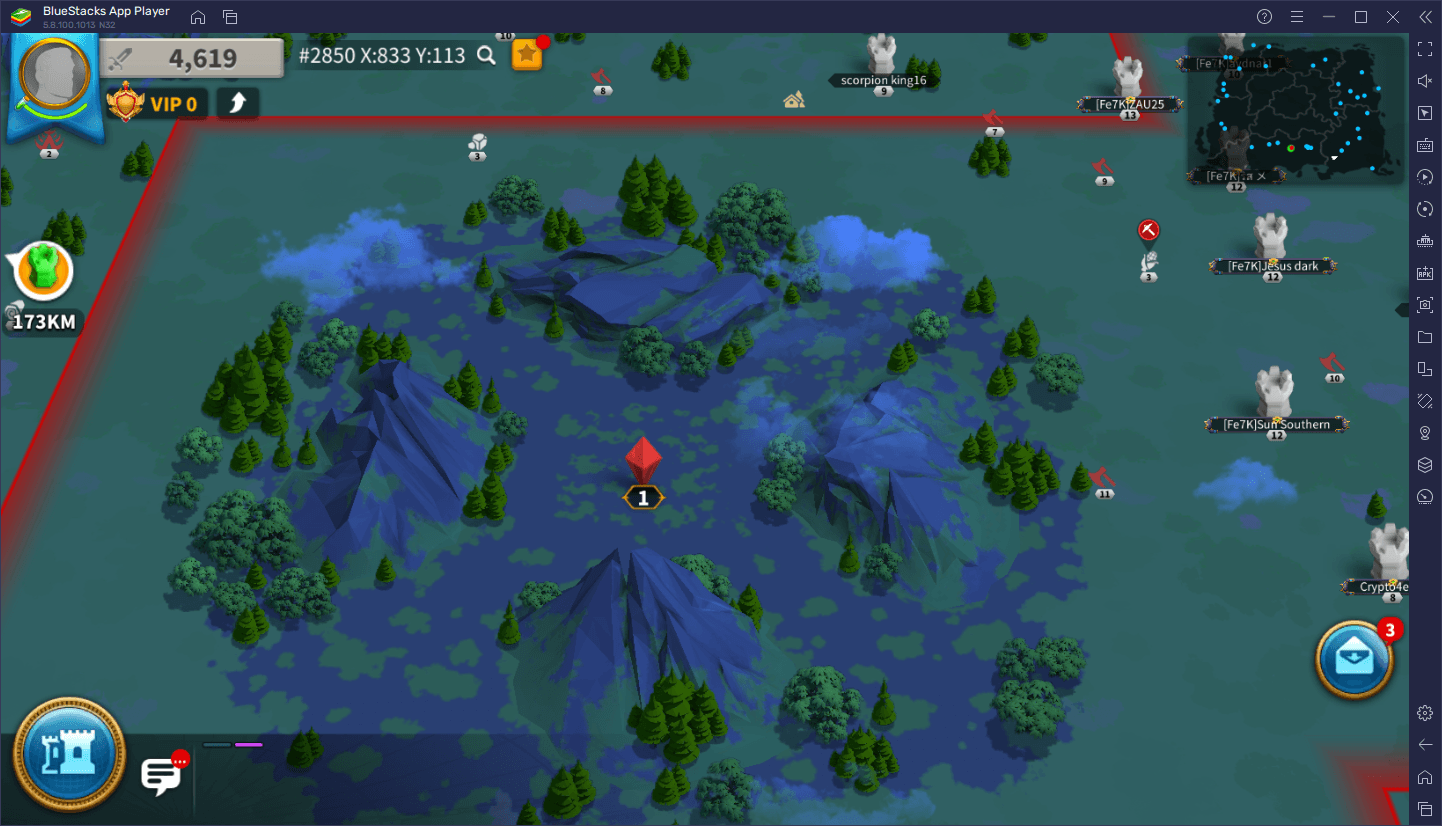
-
Territory
Alliances are not just about uniting members under one flag, they’re also about establishing a physical presence and dominance in their respective kingdoms, via creating and expanding their own territory. In fact, the only way that an alliance can occupy important landmarks like Holy Sites, is only if they are adjacent to the alliance’s territory.
To establish an alliance’s territory, the leaders must build a Center Fortress, from which the group’s influence will expand. Afterward, each alliance member can build flags, which help to further expand the group’s territory towards the direction where the flags are placed.
-
Help
Members of an alliance can give and receive aid to speed up their research and construction projects. Every time you start building or researching something, you will see a handshake icon pop up above the respective building. When you click on it, you’ll ask for help from your alliance. Every time someone lends aid, you’ll reduce the time required to finish the respective project by a few seconds. Additionally, those who lend aid will receive individual credits, a currency that can be used in the Alliance Shop.

The number of people that can help you on any project, as well as the time decreased every time you get assistance, varies depending on the level of your Alliance Center.
-
Storehouse
This is where the resources procured from resource points within the alliance’s territory are stored. These resources are generated passively as long as any alliance resource points remain within your territory. Similarly, gathering resources from regular resource points will also generate supplies for your alliance, which are then kept safe in the storehouse.
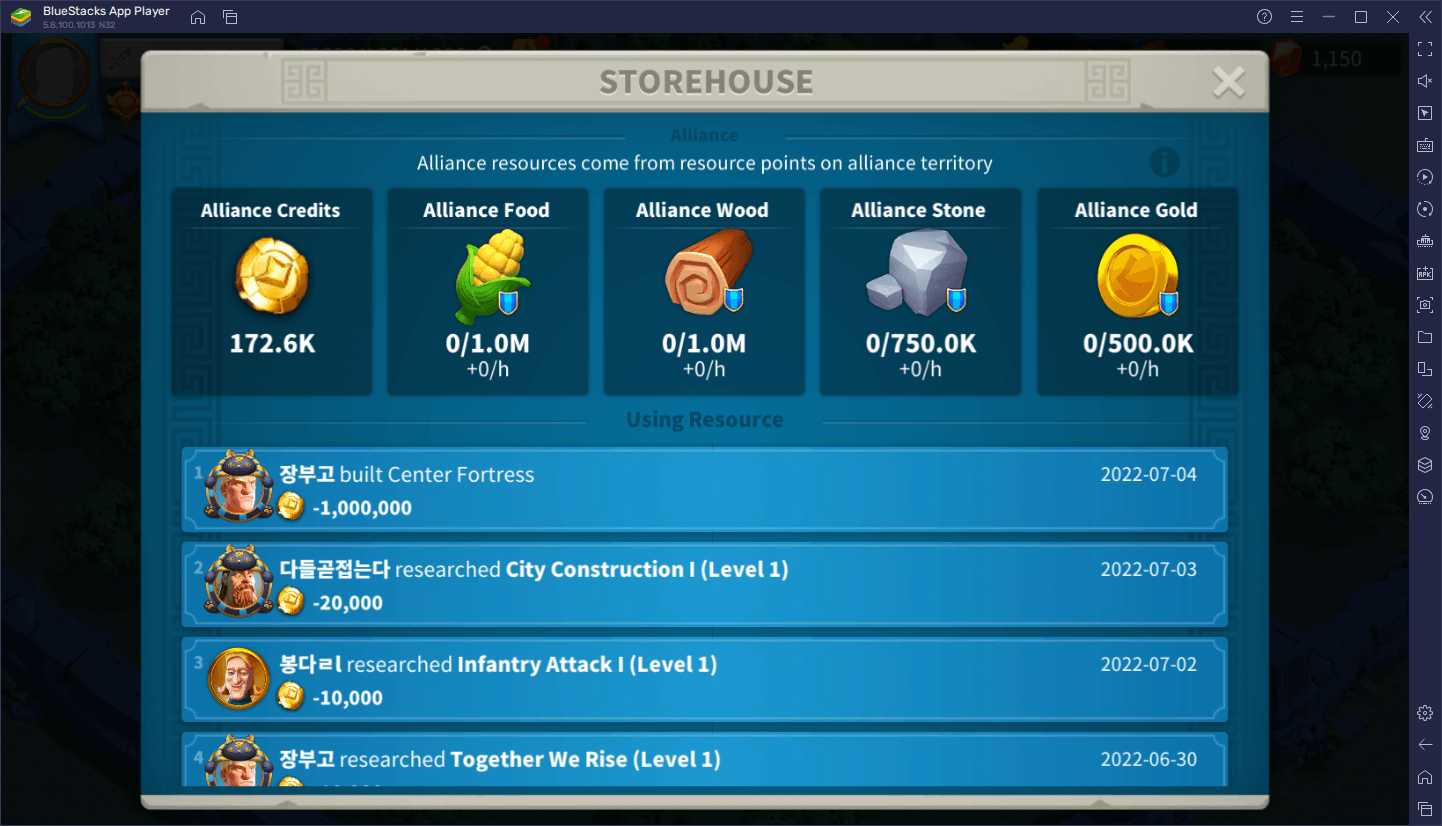
-
Technology
Alliance members can contribute resources towards researching certain technologies which, when unlocked, will grant bonuses to everyone. Once the officers and leaders decide upon a technology to research, everyone can contribute a small amount of resources every few minutes to generate technology points and advance said research. Moreover, once enough technology points have been generated, the officers or leader can formally begin the research.
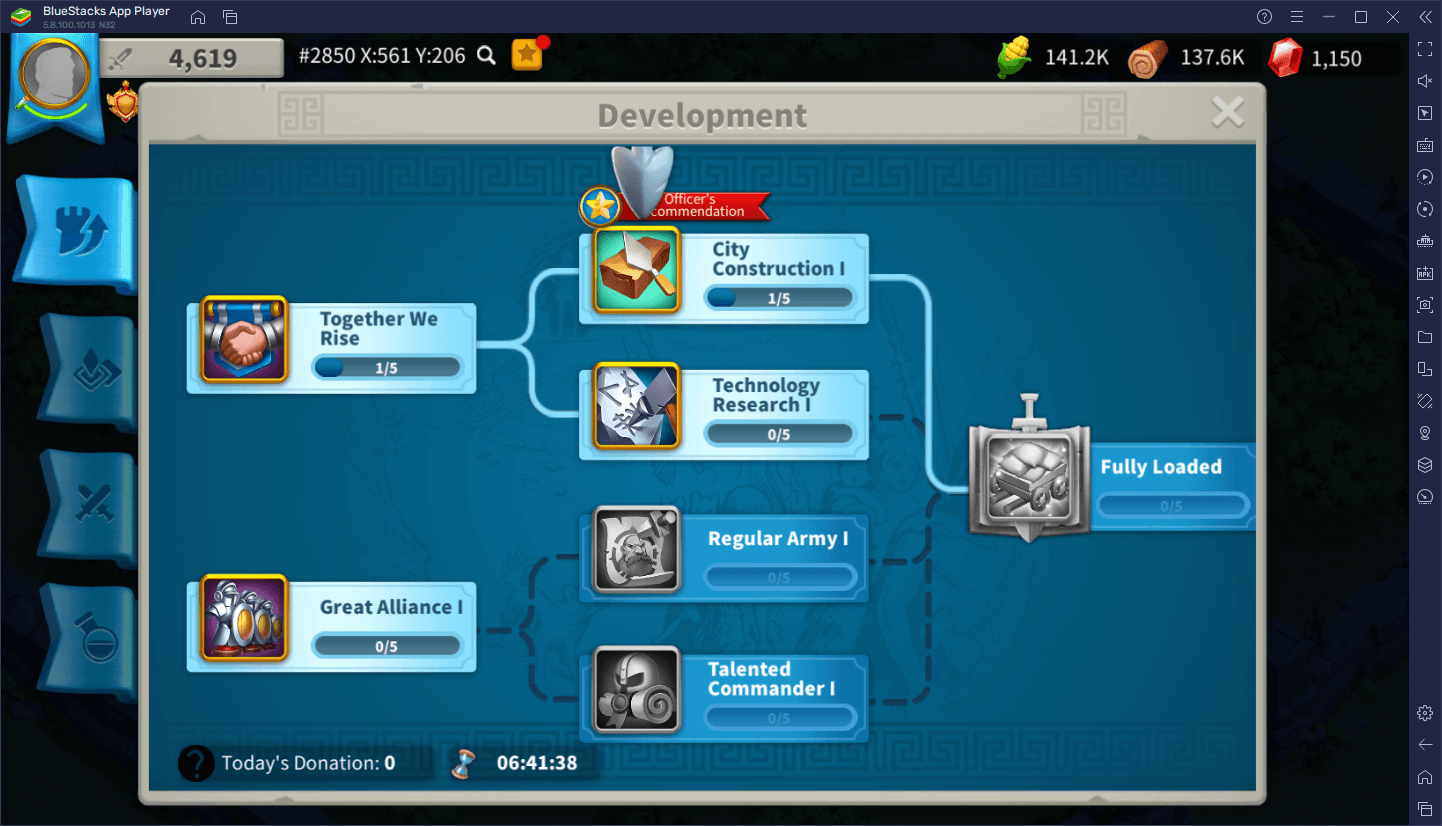
-
Gifts
Every time an alliance member purchases a bundle, destroys a barbarian fort, or defeats Lohar, everyone will receive an alliance gift. These gifts contain a variety of valuable items, along with gift points and key points. These points are used for increasing the gift level of the alliance and contribute towards unlocking the Treasure of White Crystal, respectively. The quality of the items received for opening alliance gifts varies according to the alliance’s gift level. Moreover, the quality of the items in the Treasure of White Crystal will increase for every 10 gift levels.

-
Shop
By donating to the alliance technology, or assisting other players’ construction and research projects, players will obtain individual credits, a currency used in the Alliance Shop for purchasing a variety of items, including speedups, resource packs, keys, tomes of knowledge, and more. It’s worth pointing out that these individual credits are not lost if you leave an alliance, and can be used immediately after joining a new alliance.
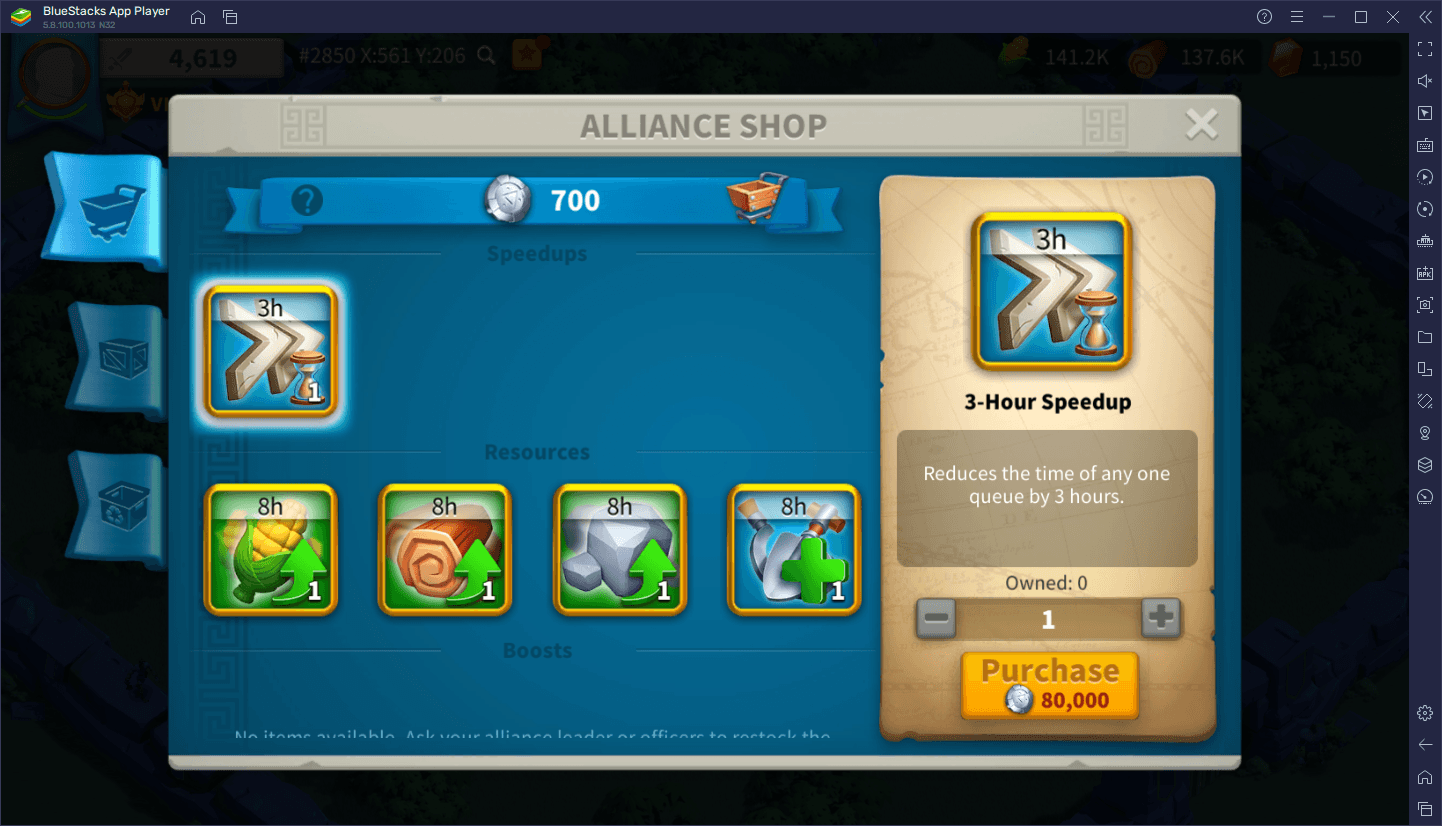
As you can see, there are tons of benefits from joining an alliance, other than having other players help you out in case you get attacked. For this reason, finding a good active alliance is pivotal for your success in Rise of Kingdoms.
However, these are just a few basic ways in which you can get help from your alliance. The real buffs and boosts come from the high-end PvP and the capturing of valuable objectives when you’re far along in the game, which is one of the most challenging parts of Rise of Kingdoms.
Holy Sites: What They Are and How to Use Them
These objectives include the Holy Sites we mentioned above, which include mostly three different types of neutral buildings that you can find in the world: Sanctums, Altars, and Shrines. Passes are also a type of Holy Site that don’t actually give bonuses, but allow the members of the alliances who control them to move from one region to another, or to use Targeted Teleports between regions with connected Passes. Finally, the Lost Temple is the final type of Holy Site, which is the most contested building during the periods when it’s available, since the leader of the alliance who controls it is crowned “King” of the Kingdom.
The three main types of Holy Sites, Sanctums, Shrines, and Altars, become available every 3 days, during which any alliance whose territory is adjacent to them can march up and defeat the NPC guardians to occupy it. Moreover, an alliance that is able to occupy and hold the Holy Site for 4 hours will gain permanent control of it, and the buffs it confers, until the next challenge period.
The Lost Temple, on the other hand, activates every 7 days, and the alliances that contest it must hold it for 8 hours to permanently control it. Understandably, the buffs that the King can grant are significant and can even affect the entire Kingdom.
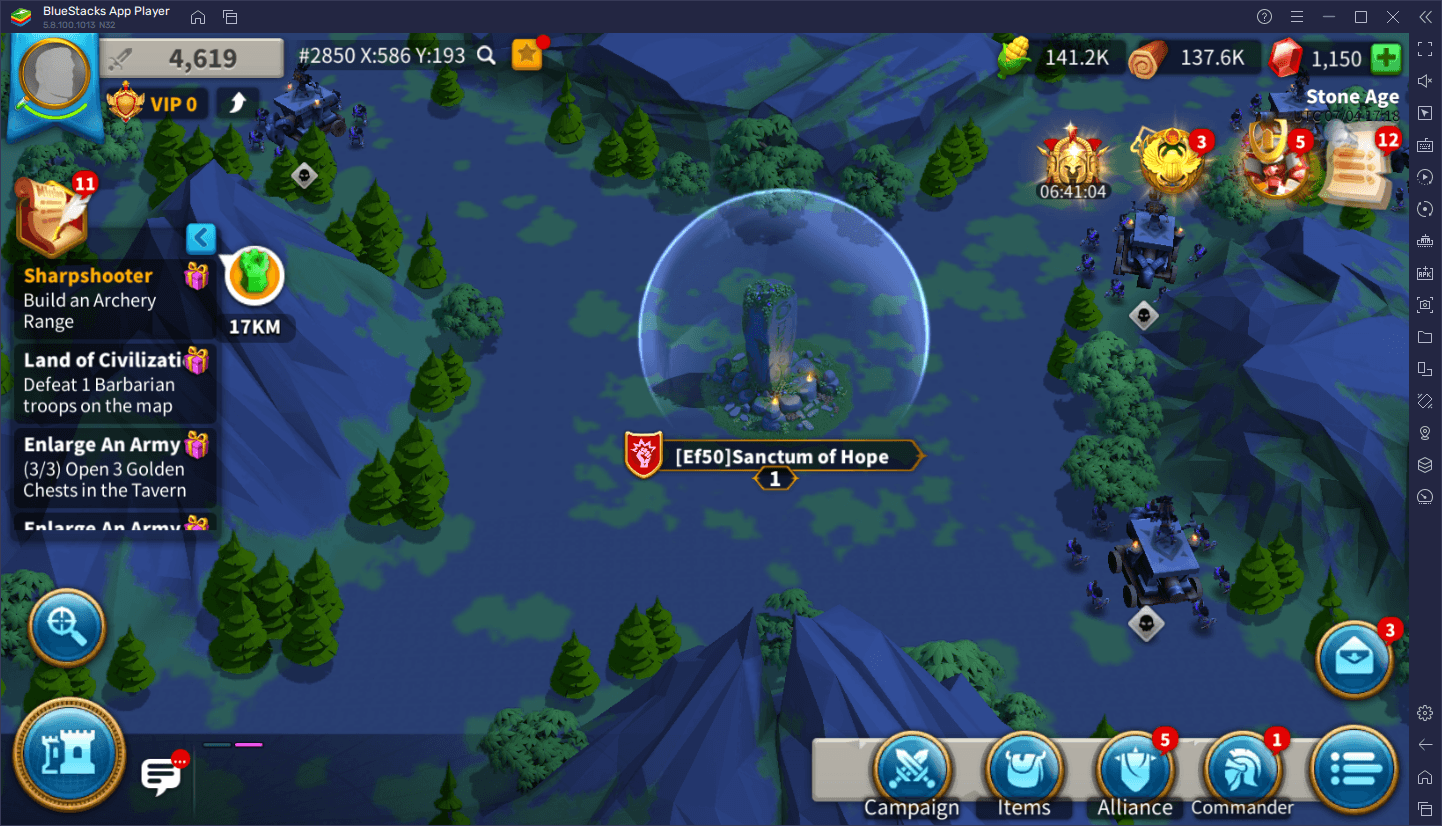
Types of Sanctums
There are a total of 70 Sanctums in the Kingdom, divided into four different types, each of which granting a different buff when controlled:
- Sanctum of Blood: Troop Health +2%
- Sanctum of Hope: Gathering Speed +5%
- Sanctum of Wind: March Speed +5%
- Sanctum of Courage: Commander EXP Gain +5%
Types of Altars
There are 37 Altars in total spread across the Kingdom, decided into six different types:
- Earth Altar: Building Speed +5%
- Harvest Altar: Resource Production +5%
- Surge Altar: Troop Defense +3%
- Flame Altar: Troop Attack +3%
- Storm Altar: Training Speed +5%
- Wisdom Altar: Research Speed +5%
Types of Shrines
Finally, there are 9 Shrines in total, spread across 4 different types:
- Shrine of Order: Troop Defense and Health +3%
- Shrine of Honor: Rallied Army Attack and Gathering Speed +5%
- Shrine of Radiance: Action Point Recovery and Healing Speed +20%
- Shrine of War: Troop Attack +3% and Training Speed +10%
As you can see, the Shrines are the ones that give the most significant bonuses, especially for players who constantly engage in PvP. Accordingly, they are also some of the most costly to capture and hold.
Keep in mind that the Holy Site buffs do not stack. In other words, controlling two Sanctums of Courage, for example, will only grant you only an extra 10% to Commander EXP Gain, and not the 20% it would give if it stacked. As such, the only reason you would want to capture and control multiple of the same type of Holy Site is to prevent other alliances from doing so.
It’s important to point out here that, all the severely wounded troops involved in battles for Altar and Sanctums are sent to the Hospital, while units that are severely wounded fighting in Shrine battles will die immediately.
And with that, you now know everything you need to know about the alliances in Rise of Kingdoms. There are other tidbits of info and tips and tricks that you’ll pick up along the way, though the most important aspects are in this article. Keep in mind that alliances are cooperative efforts; always pay attention to your leaders and officers, and work together towards expanding the group and capturing high value objectives once you’re strong enough.













